

Symptom Tracking, Charting, & Reminding. Pendragon Software - Palm OS Database Software Home Page. Invivodata. GPS Tracking, Maps, Analytics, Challenge Friends, Find Top Runs and Rides. Exosite. Our platform helps you get to market faster.Automated in-field updates?
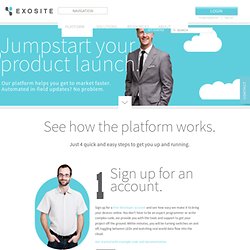
No problem. Jumpstart yourproduct launch. See how the platform works. West Wireless Health Institute. Basis — health and heart rate monitor for wellness and fitness. Archive » Designing the Stress Watch. HeartCare2 Project. Personal Informatics Tools. Healthcare Innovation by Design Group News. Omada Health. Refreshing medical data collection. 2011-09-12 WellPoint and IBM Announce Agreement to Put Watson to Work in Health Care. INDIANAPOLIS and ARMONK, N.Y., - 12 Sep 2011: WellPoint, Inc.
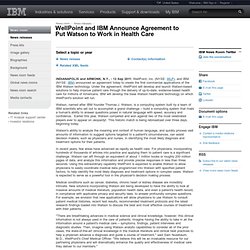
(NYSE: WLP), and IBM (NYSE: IBM) announced an agreement today to create the first commercial applications of the IBM Watson technology. Under the agreement, WellPoint will develop and launch Watson-based solutions to help improve patient care through the delivery of up-to-date, evidence-based health care for millions of Americans. IBM will develop the base Watson healthcare technology on which WellPoint's solution will run.
Watson, named after IBM founder Thomas J. Watson, is a computing system built by a team of IBM scientists who set out to accomplish a grand challenge – build a computing system that rivals a human's ability to answer questions posed in natural language with speed, accuracy and confidence. In recent years, few areas have advanced as rapidly as health care. Medical conditions such as cancer, diabetes, chronic heart or kidney disease are incredibly intricate. Google set to revolutionize mHealth and medicine with Google Glasses? By: Matthew DiPaola, MD News from unnamed employees at the X center, a secretive experimental Google product laboratory, indicates that Google will be releasing eyeglasses with an integrated computer and camera by year’s end.
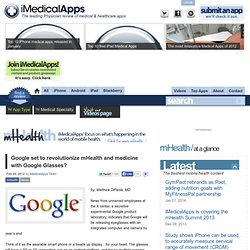
Think of it as the wearable smart phone or a heads up display…for your head. The glasses will have a 3G or 4G connection, run on an android platform, and house multiple sensors including GPS. EteRNA - Played by Human, Scored by Nature. Parallax RFID Reader Arduino. The NovaDreamer Lucid Dream Induction Device. NovaDreamer Lucid Dream Induction Device.
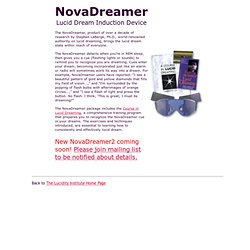
Pipette Company Blog. Step aside Arduino, TinkerForge is the new sheriff in mod-town (video) Startup Tinkerforge presents modular open source hardware Developing, discovering, learning and tinkering made easy.
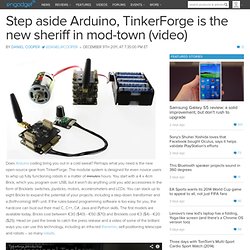
The new system of hardware building blocks from Tinkerforge allows to plug sensor and actor modules together and to program the desired behavior of the modules without prior knowledge in hardware programming. Twine Sensor Allows You To Easily Create Internet Connected Systems. Twine has just started its journey on Kickstater, looking to make the jump from concept to manufacture and is a new device which has been designed to allow you to easily connect things and monitor them from the Internet.
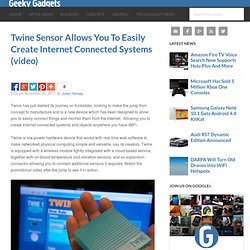
Allowing you to create Internet connected systems and objects anywhere you have WiFi. Twine is low-power hardware device that works with real-time web software to make networked physical computing simple and versatile, say its creators. Twine is equipped with a wireless module tightly integrated with a cloud-based service, together with on-board temperature and vibration sensors, and an expansion connector allowing you to connect additional sensors if required.
Watch the promotional video after the jump to see it in action. Its developers explain how Twine has been designed to work: “The Spool web app makes it simple to set up and monitor your Twines from a browser anywhere. Biometric technology in action. Printable transistors usher in ‘internet of things’ How will we design products for the Internet of Things? As revolutionary as the mobile ecosystem is, it’s the interactions of more-intelligent connected devices with people outside the context of phones or computers that will drive more innovation, says Mark Rolston, the chief creative officer at Frog Design. Rolston, speaking at the Mobile Future Forward conference on Monday in Seattle described a future where devices become more contextually aware, thanks to embedded and connected sensors. Computers — the boxes that we consult in the form of tablets, mobile phones and desktops — are wonderful, but they take away from what it is to be human and to really connect with one another.

So the challenge and opportunity that lies ahead is how to get the computers out of computing, said Mark Rolston, the chief creative officer at frog. Speaking at the GigaOM RoadMap conference in San Francisco, Rolston took the audience through a vision of omnipresent computing. Siri: Say hello to the coming “invisible interface” 1Executive Summary After solely using a Google Android phone for nearly two years, I recently added an Apple iPhone 4S to my stable of smartphones.
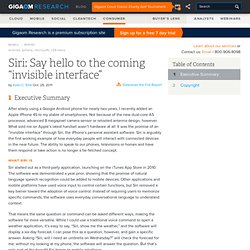
Not because of the new dual-core A5 processor, advanced 8 megapixel camera sensor or retooled antenna design, however. What sold me on Apple’s latest handset wasn’t hardware at all: It was the promise of an “invisible interface” through Siri, the iPhone’s personal assistant software. Siri is arguably the first working example of how everyday people will interact with connected devices in the near future. Opportunistic Programming. Take a d.school class.
Applications are now closed.
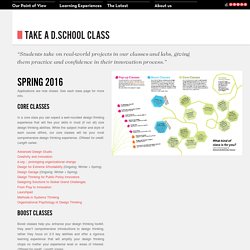
See each class page for more info. Core Classes. Computing Machinery and Intelligence A.M. Turing. Download. We needyour help! Help us continue with your generosity! Donate Processing is available for Linux, Mac OS X, and Windows. Electronic ‘skin’ can monitor your heart - SentinelSource.com: Health Fitness. Posted: Wednesday, August 31, 2011 12:15 pm | Updated: 1:33 pm, Wed Aug 31, 2011.
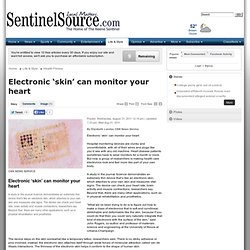
Electronic Skin. Nokia shows off stretchable “electronic skin”, other futuristic stuff (video) Strongly enhanced sensitivity in elastic capacitive strain sensors - Journal of Materials Chemistry. Square Updates Mobile Payments App For Merchants With Loyalty Features, Printed Receipts And More. After hitting $11 million in mobile payments volume per day, Square is announcing more news—an update to the startup’s flagship iOS and Android payments apps. As you may know, Square Card Reader and companion app transforms any iPad, iPhone or Android phone into a full point of sale system. One of the major additions to version 2.2 of the app relates to customer loyalty.
Now merchants can reward their regular customers with a new in-app loyalty feature that allows merchants to recognize their most frequent customers when they enter their store. Google Voice for Android finally gets mass texting capabilities. Harnessing the Power of Data: Todd Park’s Vision for Rebooting U.S. Healthcare. Silk Woven into Bio-Chip of the Future. In Share. Insert Coin: SeeMeCNC H-1 cuts entry price to the world of 3D printing. Sony may be preparing an internet-based cable TV alternative.
Optimus 3D Gingerbread update coming, world shrugs, stares wistfully at Ice Cream Sandwich. Latest Upgrade Empowers Users with Powerful 3D and Multimedia Options. Researchers build transparent, super-stretchy skin-like sensor. Stretchable electronics: A shapely future for circuits. Smart skin: Electronics that stick and stretch like a temporary tattoo. TR35: Stéphanie Lacour, 30. LEGO Mindstorms NXT 2.0. Preventice.
The Four Pillars of Technology Transfer. Eye-tracking technology Tag Archive. RIBA II robot helps prop up patients. As people experiment, they find Kinect is much more than a game. Amazon Just Won The Android Tablet Wars With The $199 Kindle Fire. Monitor Your Home Remotely with FaceTime on iPhone 4 or iPod touch 4G [How to Guide. Silicon Valley developers gather to create apps for people with autism. A Skeptic Takes on Mobile Health - Technology Review#.TneuOJznL4E.twitter#.TneuOJznL4E.twitter#.TneuOJznL4E.twitter.